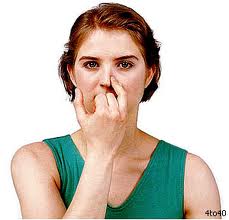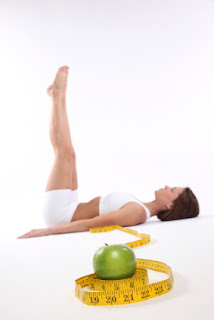Yoga Articles > Yoga and Asthma
Just imagine that it's the middle of the night and you suddenly
wake up feeling uneasy. You are unable to catch your breath and getting
suffocated. The whole world seems to be closing in around your throat
and chest. The urgency to breathe is making you panic. Do you realize
what is happening to you?
You're having an asthma attack! Asthma comes from the Greek word
for “panting”.
Asthma is primarily a disease of the respiratory system, where
there is a wheezing cough and a sense of suffocation, since the patient
has difficulties in inhaling rather than exhaling the air. Asthmatic
attacks can be triggered by allergies, exercise, cold air, pollution and
stress related disorders. The attack of asthma may last for a few
minutes, few hours or even days wherein the patient is exhausted. It is
common to all ages, children and adolescents of both sexes, irrespective
of socio-economic background. Asthma and Bronchitis are two chronic
lung ailments that can cause damage to the lungs. These should be
treated immediately to avoid any complications.
Several studies have shown yoga to be a powerful adjunct therapy to
reduce the frequency and intensity of asthma attacks as well as to
decrease medication use. Tests carried out at Yoga Therapy Centers,
across the world, have shown remarkable results in curing asthma. In
some cases it has also been found that attacks can actually be averted,
without the aid of drugs, just through yogic practices. There is ample
research evidence to substantiate the fact that Yoga Therapy makes the
treatment so much more successful. Nowadays, even allopathic and
homeopathic doctors have arrived at the consensus that Yoga is an
excellent alternative therapy for Asthma.
In an experiment conducted in Western Australia, 22 male patients
aged 52 to 65 were selected. They suffered from severe breathing. Half
of the men underwent standard treatment: physiotherapy that included
relaxation techniques, breathing exercises and general workouts to
improve stamina. The other 11 men were given a yoga teacher instead of a
physiotherapist. He taught them techniques of yoga breathing, which
encouraged the use of all chest and abdominal muscles as well as ten
yoga postures.
The patients practiced their particular exercises for nine months.
Then they were reexamined at the hospital: a technician tested their
lung function, a physician screened them closely to determine how their
symptoms had changed, and a stationary exercise bicycle was used to
measure their capacity for exercise.
The difference between the two groups was striking. The men who had
practiced yoga showed a significant improvement in their ability to
exercise, but the physiotherapy group did not. Eight or more out of the
11 patients who underwent yoga declared that they had definitely
increased tolerance for exertion and that they recovered more quickly
after exertion. The physiotherapy group reported no similar improvement.
Best of all, the patients who had studied yoga apparently gained the
ability to control their breathing problems. A significantly greater
number of patients reported that "with the help of yogic breathing
exercises, they could control an attack of severe shortness of breath
without having to seek medical help," according to the study.
Studies conducted at yoga institutions in India reported impressive
success in improving asthma. For example, one study of 114 patients
treated over one year by yoga found a 76 percent rate of improvement or
cure and that asthma attacks could usually be prevented by yoga methods
without resorting to drugs. A study of 46 adolescents with asthma found
that yoga practice resulted in a significant increase in pulmonary
function and exercise capacity and led to fewer symptoms and
medications. Patients were given daily training in yoga for 90 minutes
in the morning and one hour in the evening for 40 days.
Apart from this, several other studies have also shown yoga as an
alternate therapy to cure asthma. Yoga has come a long way to heal and
manage asthma. The yoga approach is ideal in the treatment of asthma and
any bronchial problems as the breath is the thread that runs through
the entire practice.
Since Yoga believes that the mind is central to a diseased
condition, pacifying and placating it would, in itself, help cure the
disease to a great extent.
This comes through increased self-awareness. Simple Yogic
practices help regulate breathing patterns, as well as enhance lung
functioning. Consistent practice of yoga postures and pranayama
(breathing exercises) increases the lung’s airflow, air capacity,
stamina and efficiency. Back bending postures open the chest improving
the functioning of both lung and heart. Result: Most patients are able
to manage their condition by simply allaying their fears and anxieties.
So if you are looking for therapeutic drug-free methods of Asthma
control naturally and effectively, take a look into Yoga. It won’t hurt,
in fact, help you out a lot.















































